May 21, 2018
Sunset Priest: Part One

Melissa Hamlyn recently embarked on her first VAWAA: a clay and pottery getaway with Thomas at his Goa studio set amongst a beautiful rainforest. In addition to learning how to hand pinch and decorate clay, she partied with a Maharaj and some top notch local musicians at his prime beachside hotel and took numerous exhilarating motorbike rides to Goa’s many beaches. This was Melissa’s second time wading through the polarizing experiences India offers you; below, she attempts to manifest in words the challenges, observations and lived experiences that keeps India on her favorite destinations list.
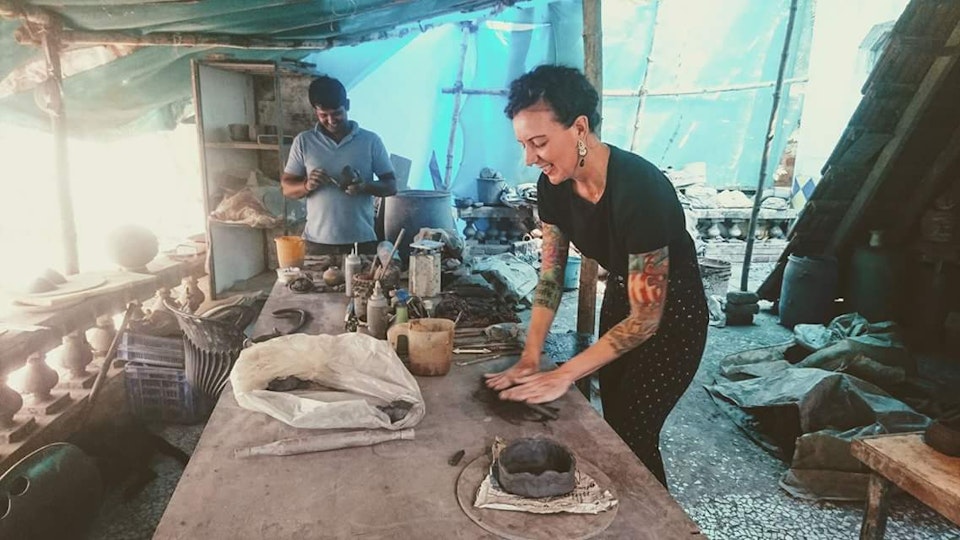
Melissa at Thomas's pottery studio, Goa. Courtesy of Melissa Hamlyn.
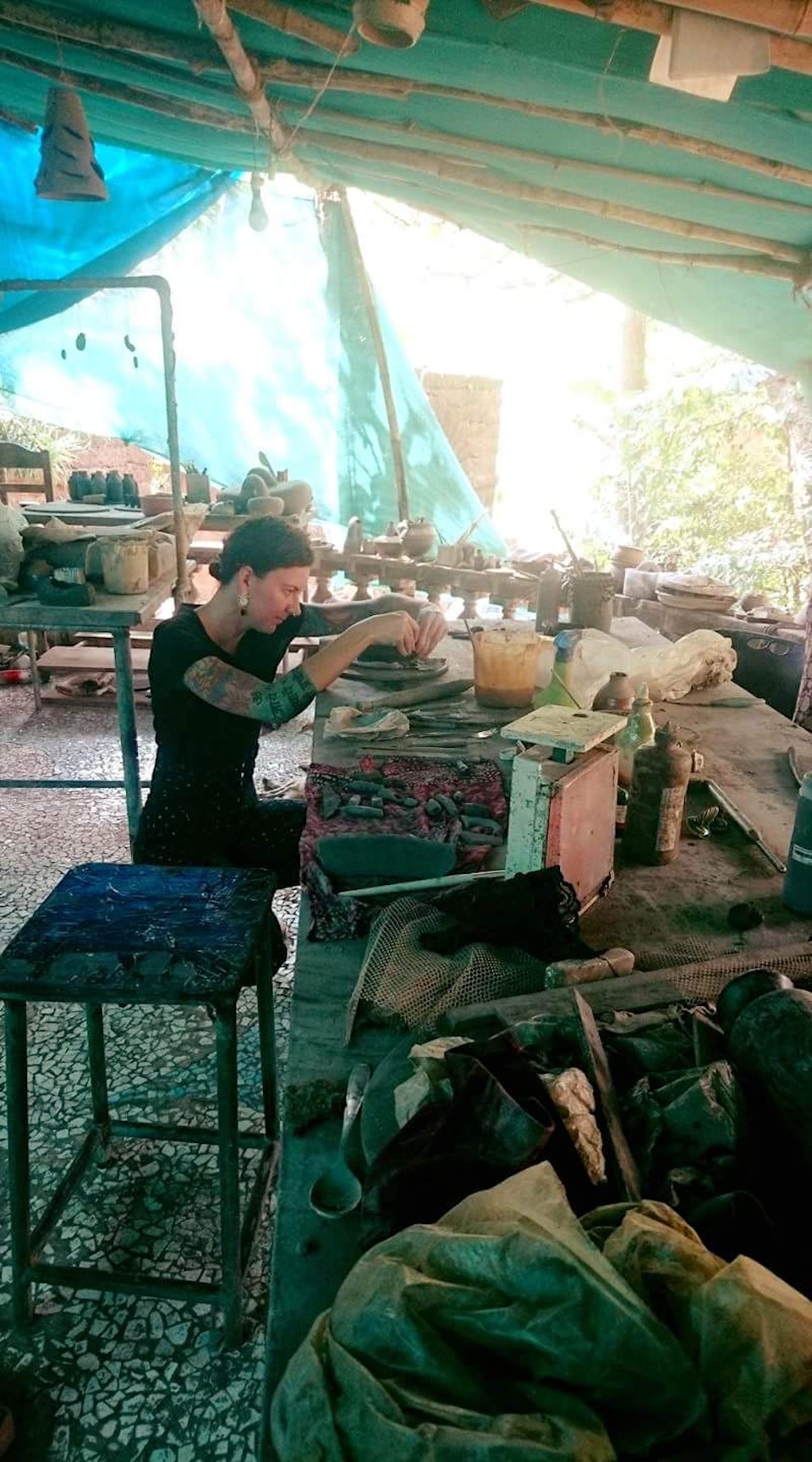
Learning pottery, hand pinching and decorating clay. Courtesy of Melissa Hamlyn.
#Delhi Diaries
In the past 12 hours I have seen the absolute chaos that is Delhi traffic accompanied by an abstract symphony of car horns, rickshaw bells, and motorbike shrills. The Delhi street kids whose skins are stained dark with dirt use this as their risky playground, dodging and weaving in the hope of selling bunches of roses or plastic model airplanes.
Piles of rubbish muddy the air and line the dirt roads, puddles of murky water filled with cow waste and urine wafts through the Delhi smog.
Stray dogs slumber in the sun and occasionally twist violently to bite at their fur to dislodge fleas. Stray people too are revealed, homeless and sprawled out amongst the urban debris in the afternoon sun, oblivious.
Beggars touch me gently on the arm as I avert my eyes to pass them, maybe they are disappointed I do not offer to help them? Policeman pause to take roadside urination stops and the spitting... so much spitting!
I make it to Nizamuddin Basti to learn about Sufi teacher Pir Vilayat Inayat Khan, who founded Hope Project which helps the poorer local families to attend school and access jobs and healthcare.
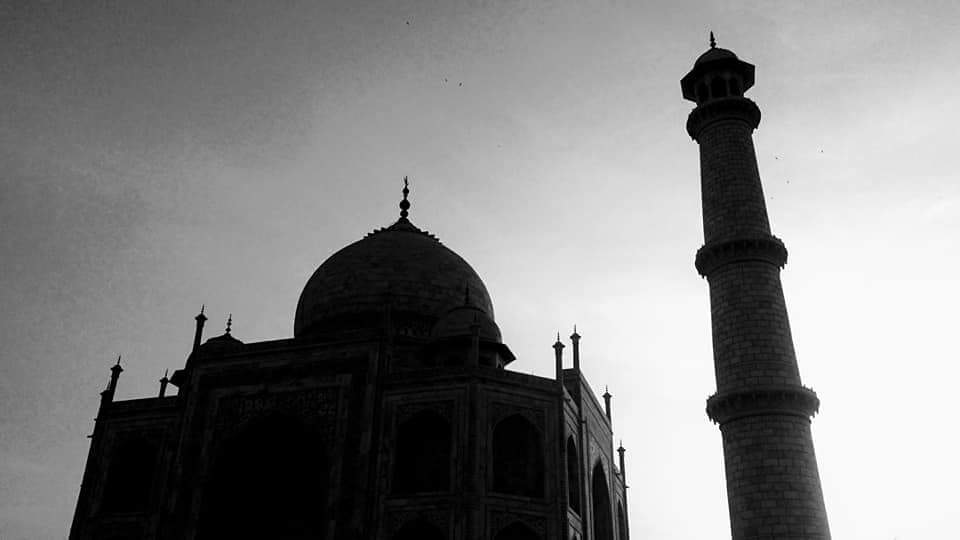
Agra lies just 4 hours away from Delhi, it is here you can visit The Taj Mahal. It really is beautiful. The translucent marble changes hue as the sun rises. Courtesy of Melissa Hamlyn.
An abundance of Sufi Shrines and Mosques provide an exotic and beautiful silhouette against the soft pinkish light of a sinking sun.
I twist and turn through claustrophobic alleyways and am met with stares that are a combination of amusement, ignorance, and curiosity but am put at ease as my nostrils are filled with strong and powerful fragrant oils and flowers being placed at Hindu Shrines from those looking for enlightenment.
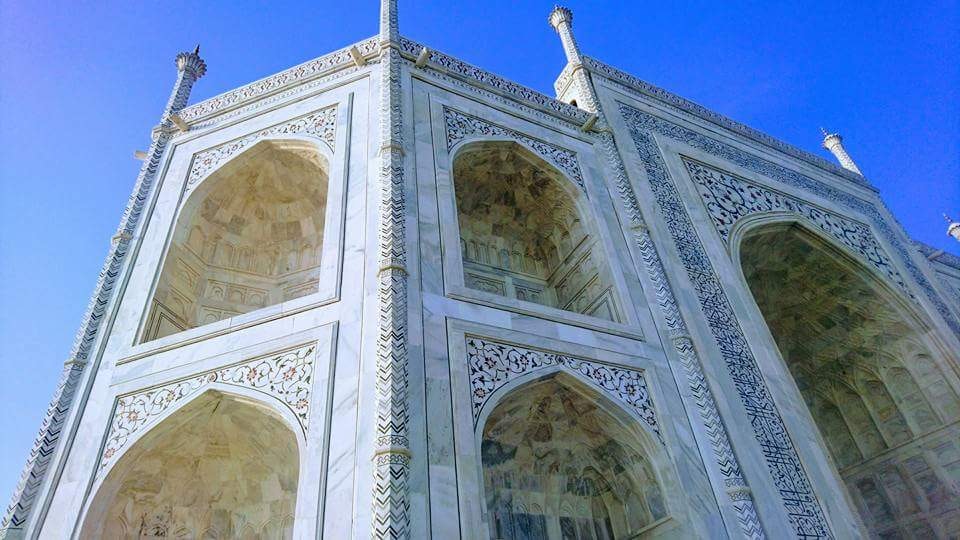
Taj Mahal just after sunrise. Courtesy of Melissa Hamlyn.
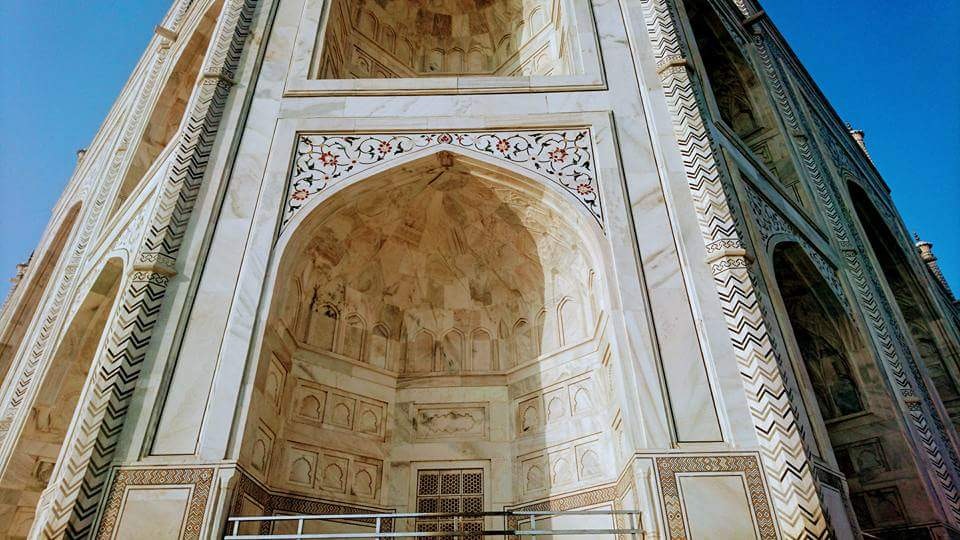
Courtesy of Melissa Hamlyn.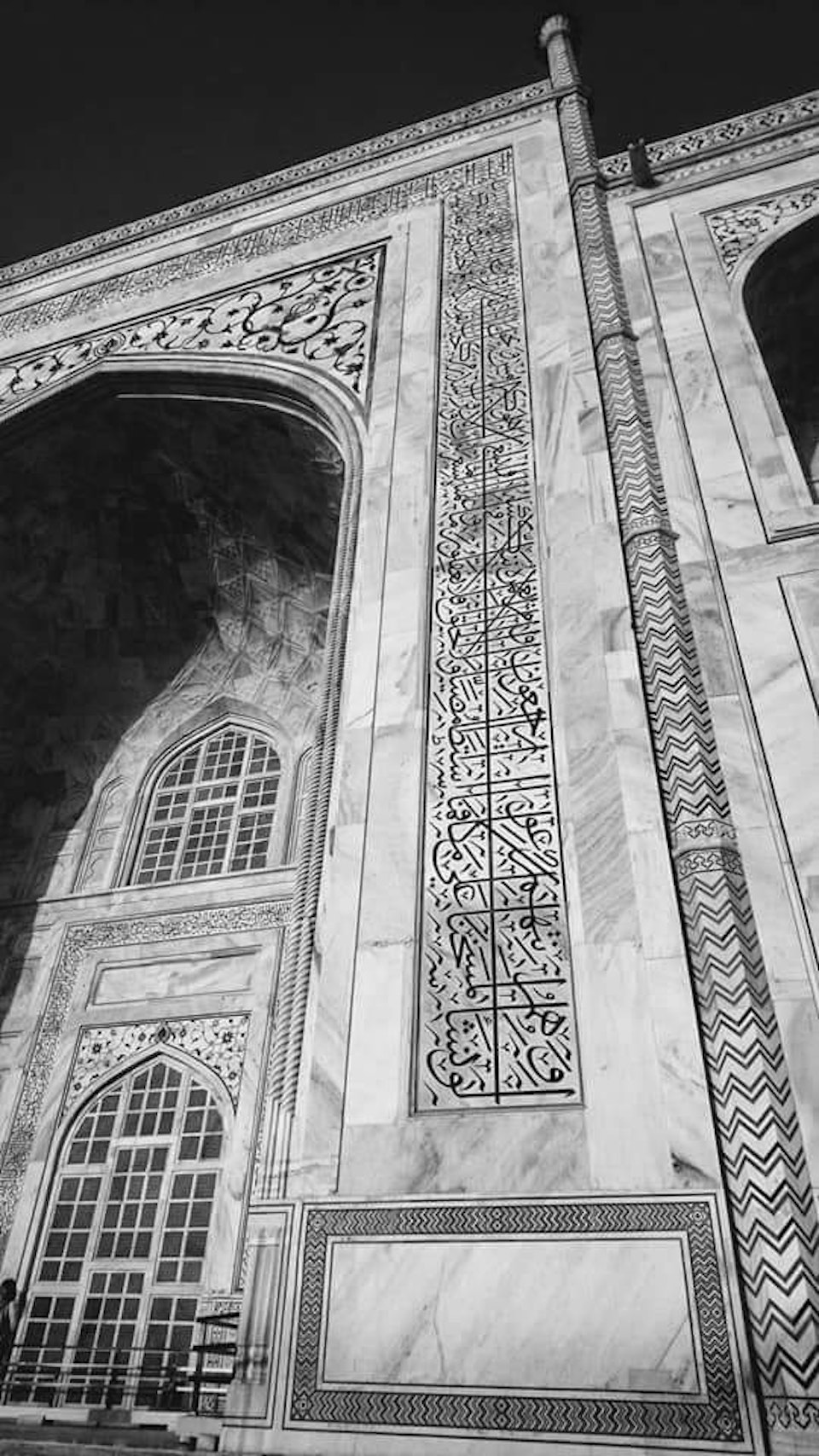
Going for a wander around The Taj Mahal; I love the fusion of Islamic and Hindu architecture, decorative motifs and literature which can be found throughout India; however The Taj Mahal is particularly stunning. The Arabic text from the Qur'an along with the flower motifs are made from precious gemstones set into the marble, hand built, cut and polished more than 400 years ago. Courtesy of Melissa Hamlyn.
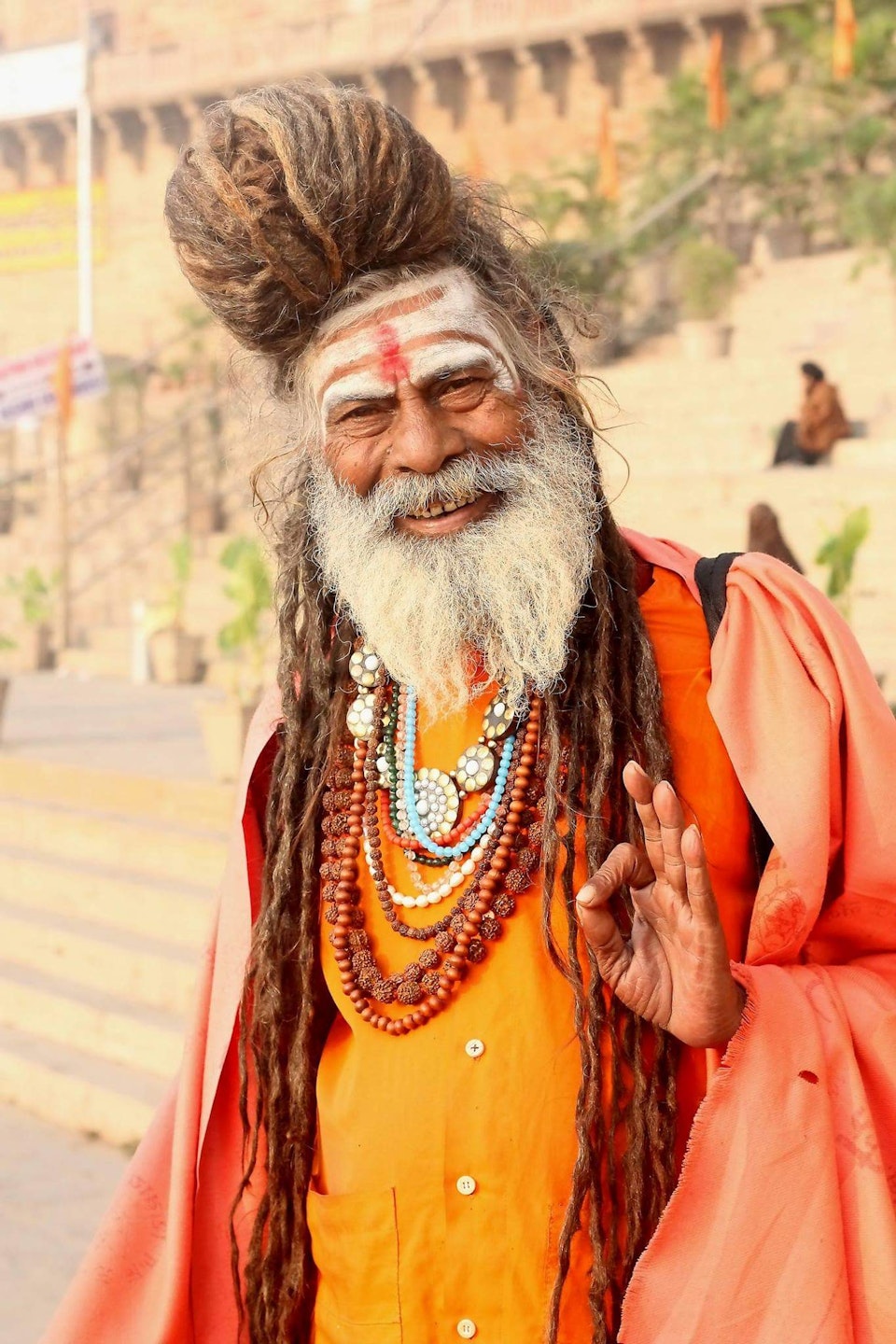
Anyone who has been to Varanasi may recognise this famous Sadhu! He has a very successful pay for photo business! Give the Sadhu of Varanasi a Google. Courtesy of Melissa Hamlyn.
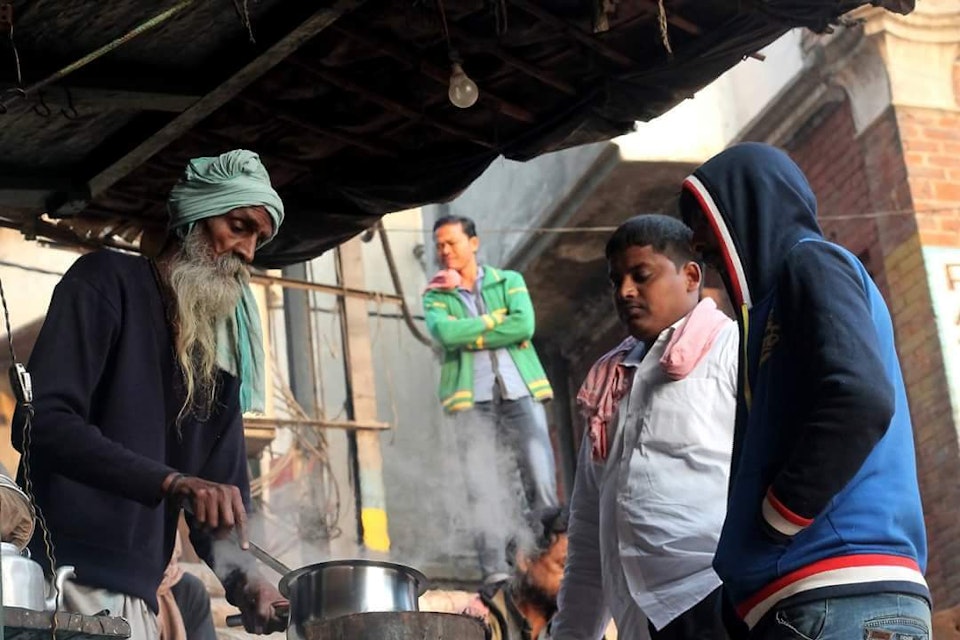
Chai stall, Varanasi. Courtesy of Melissa Hamlyn.
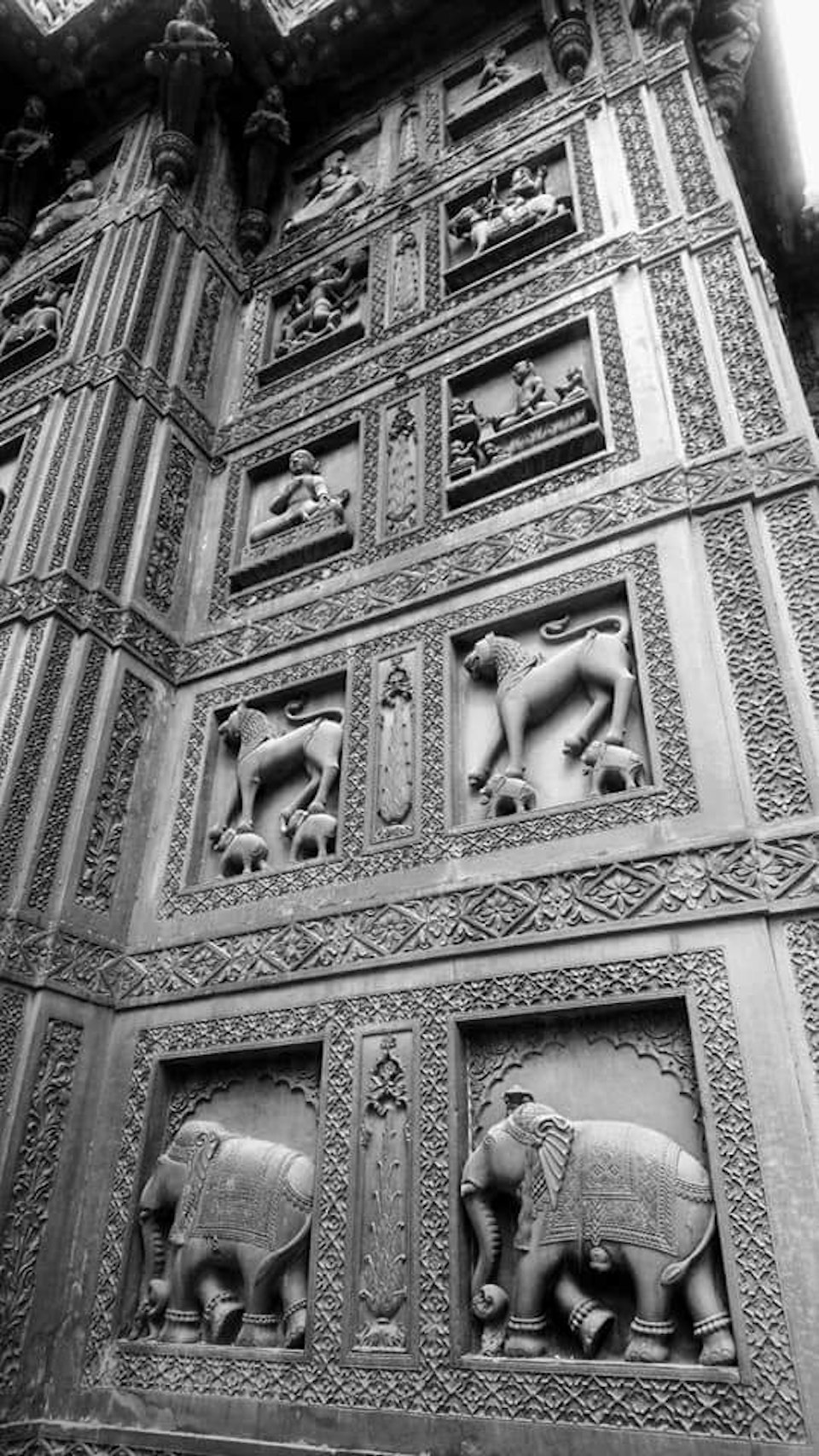
Durga Temple, Varanasi. Courtesy of Melissa Hamlyn.
As I prepare to leave, I make sure I am awake before sunrise to catch an overnight train to my next destination. As I stand on the balcony of my hotel I catch one last look at the vast cityscape that has been my home for the past 4 days, Delhi - she lies half asleep, a crescent moon hangs in the sky framed by a soft navy blue sky.
Chai sellers are preparing for their morning trade, pigeons cuddle up on window ledges and stray dogs pick at burning rubbish heaps.
Autorickshaw drivers amble along Arakashan Road enjoying the relative quiet though the onslaught of peak hour traffic is slowly building.
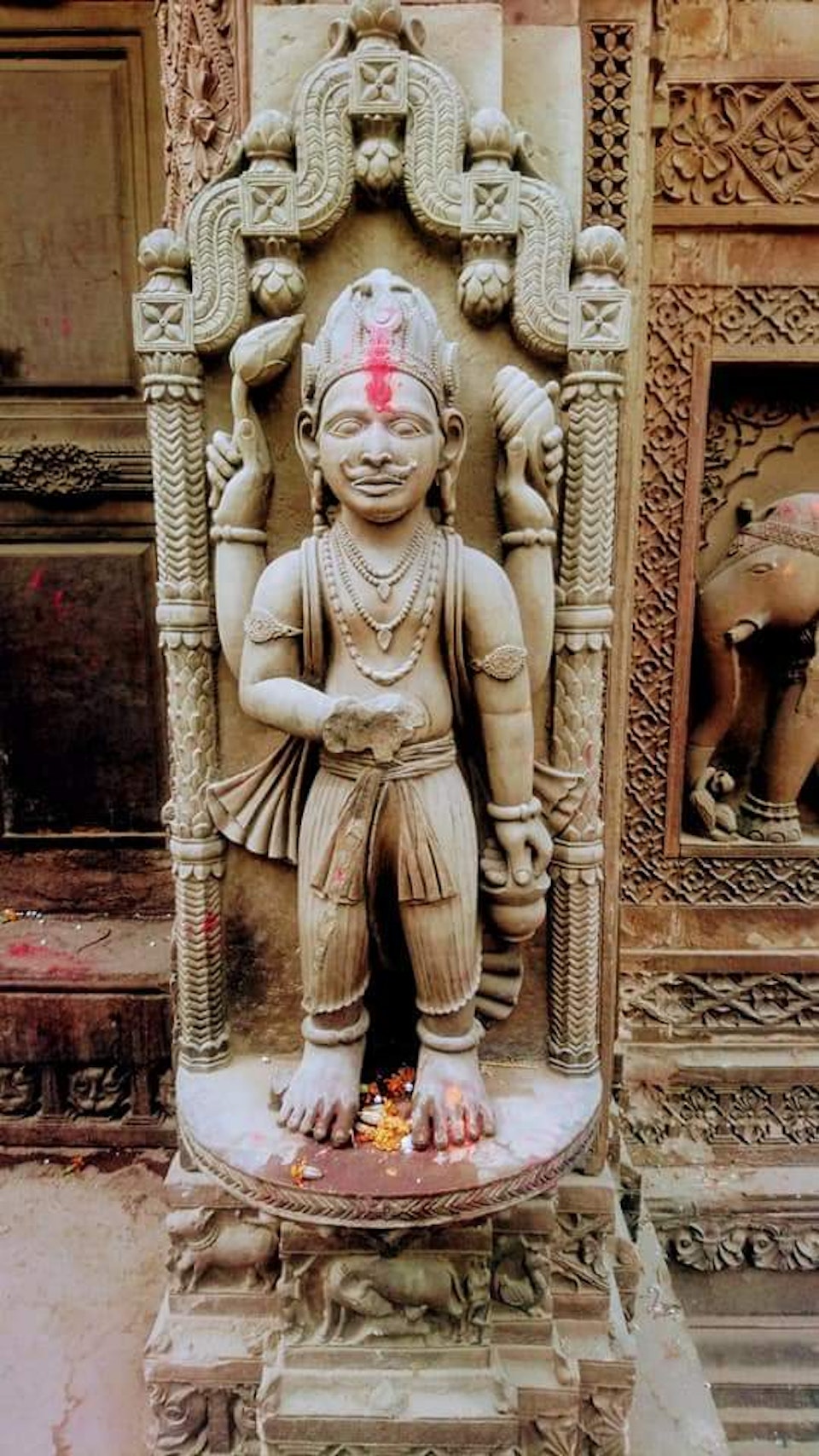
Durga Temple, Varanasi. Courtesy of Melissa Hamlyn.
Street lights flood the pre-dawn sky with a luminous and sickly yellow sheen. The electricity falters and I am plunged into darkness, albeit temporarily.
It is time to trade Delhi for the famous city of Varanasi. The overnight Shiv Ganga Express enroute to the heartbeat of Hinduism.
The sacred city of Varanasi, a place where life's most intimate rituals take place along the many ghats that lead to the Ganges. A highly prized final resting place, its waters break the death and birth cycle and free the deceased of its karmic ties and offer enlightenment.
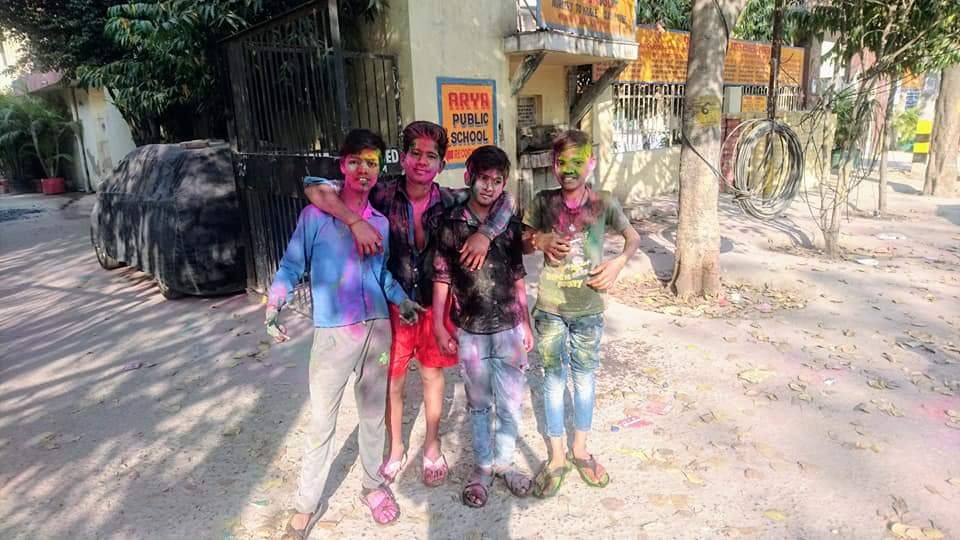
These guys were chasing me with water bombs, I managed a truce for about two seconds to get this shot, they were celebrating HOLI Festival in Delhi. Courtesy of Melissa Hamlyn.
#Varanasi Diaries
Varanasi, like Delhi, overrides your senses, its tangled streets, and laneways piled with smallshops selling cigarettes, Hindu ritual offerings, vegetables, silk scarves, roof sheeting and the more mundane necessities; cows, stray dogs, bulls, and monkeys mingle with the crowds dodging wayward rickshaws and mopeds.
However, this is where comparisons stop. The pollution and dust that hang in the airways of Delhi are traded for the fragrant scents of Sandal and Banyan wood, their smoke billows and drifts skyward and caresses the Sadhu's, Brahmin, street kids, and tourists.
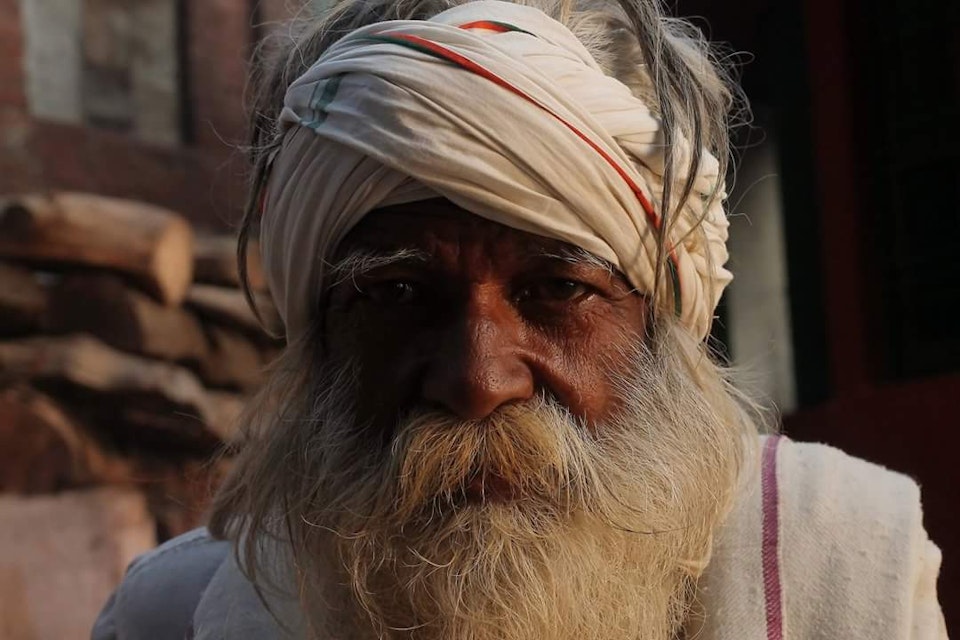
Meet the locals as you wander the burning ghat sipping chai and eating local street eats. Courtesy of Melissa Hamlyn.
This sacred smoke emanates from the burning ghats; a holy cremation ground where Hindus make the pilgrimage with their deceased from all over to ensure they reach Nirvana. Activity at the burning ghat is 24 hours a day, 365 days a year, and 250 people a day are cremated in the open by the banks of the Ganges. The cremation fires are lit by an eternal flame that has been burning for 3500 years and is maintained by holy men.
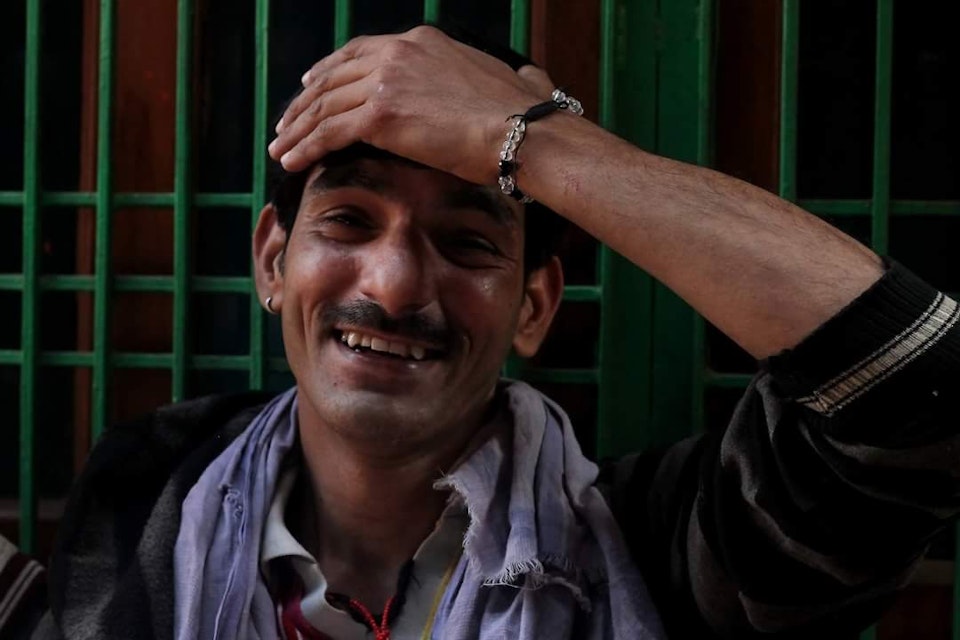
Meet the locals, just hanging around the local shop caught this customer off guard! Courtesy of Melissa Hamlyn.
The dead are wrapped in colorful fabrics, ribbons, and garlands of vibrant yellow flowers, placed on bamboo stretchers, and carried through the winding lanes before being consumed by the eternal fires. Their foreheads are gently hit with bamboo to allow the spirit to escape. No women are allowed on the burning ghat for fear they will become overwhelmed with emotion and throw themselves into the flames.
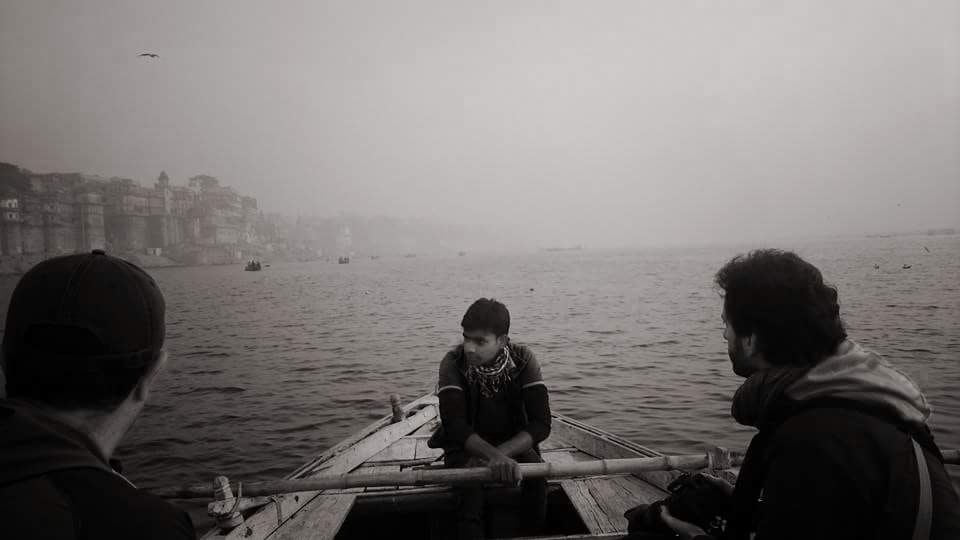
Dawn boat ride along The Gange. Courtesy of Melissa Hamlyn.
Those who assist with the cremation rituals are known as The Untouchables or The Dom caste, one of the lowest castes; they inherit this job generation after generation. To entrust such an important posthumous ritual with a low caste surprises me as it is -to me- one of the most sacred and final events of one's earthly existence.
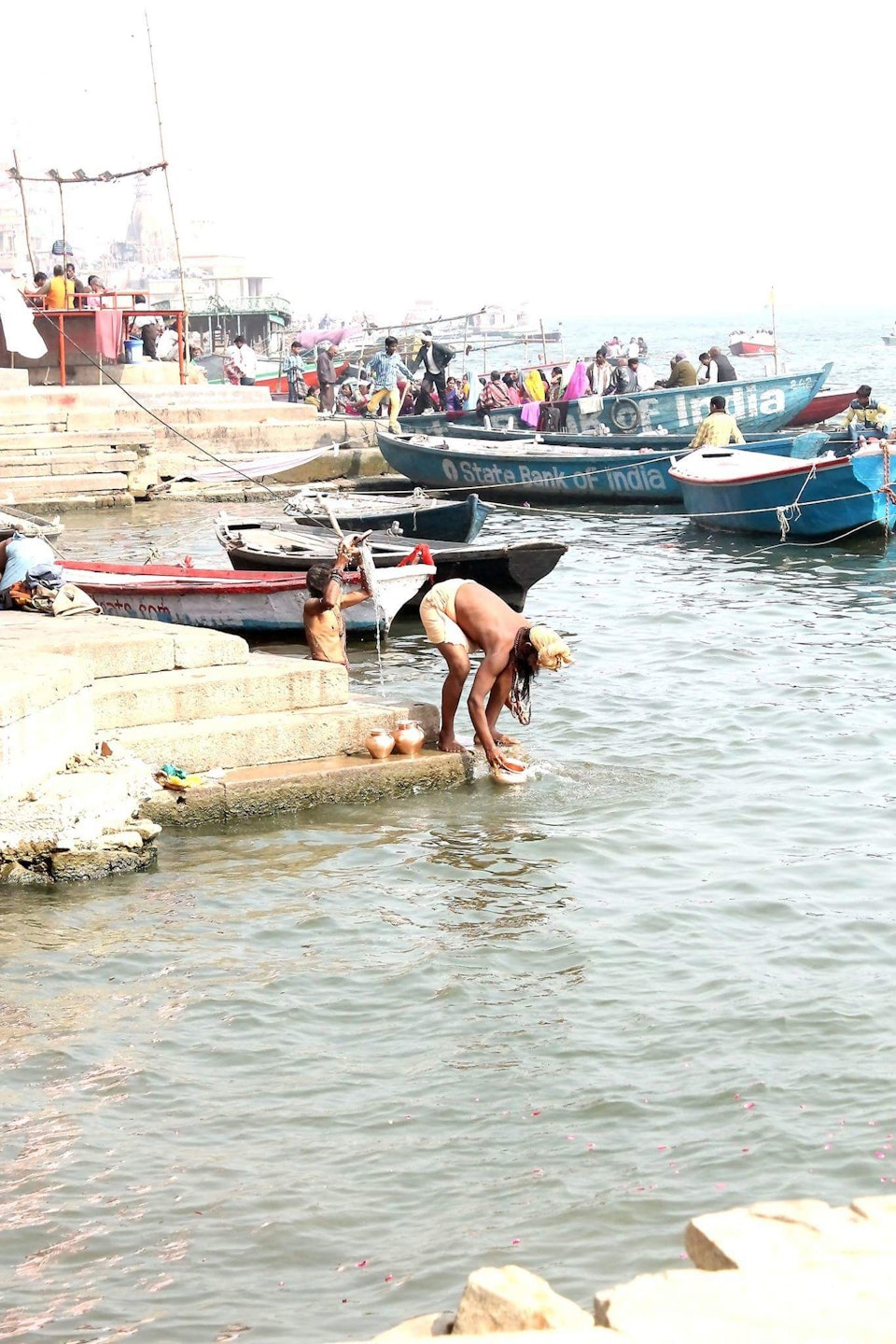
Daily meditation on The Gange. Courtesy of Melissa Hamlyn.
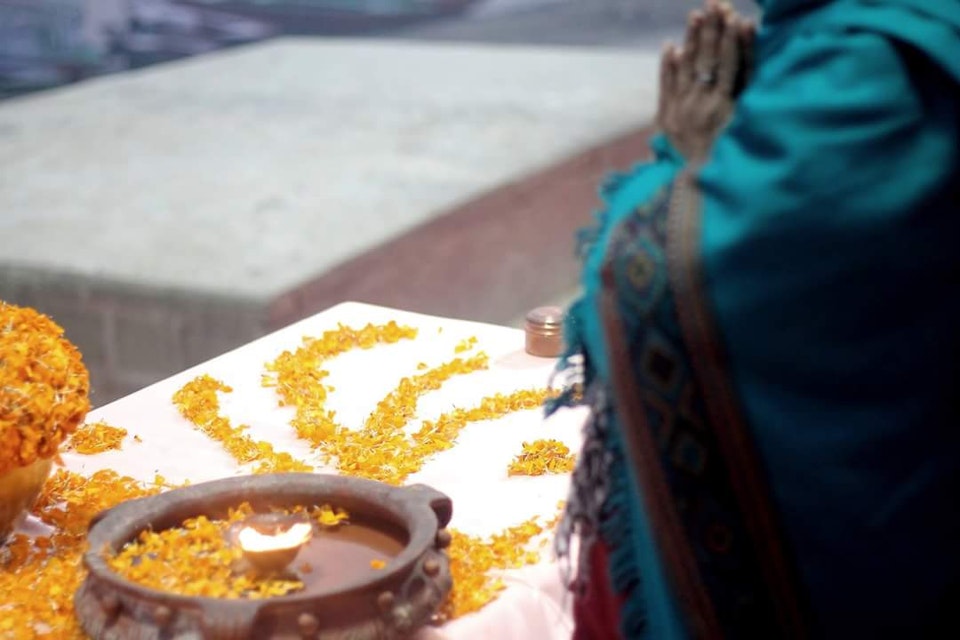
Aarti, a dawn fire ceremony giving thanks to The Gange. Courtesy of Melissa Hamlyn.
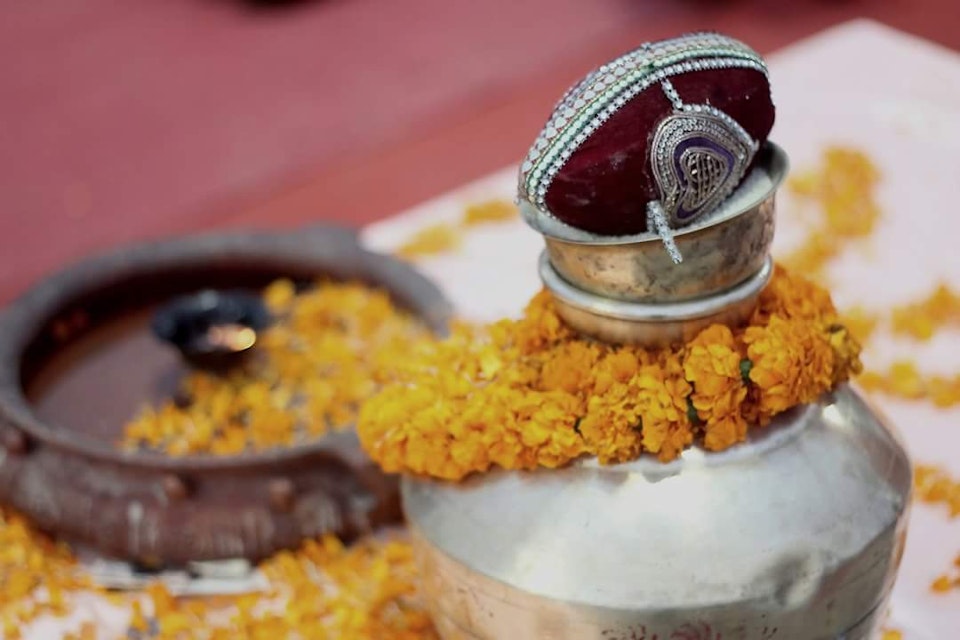
Courtesy of Melissa Hamlyn.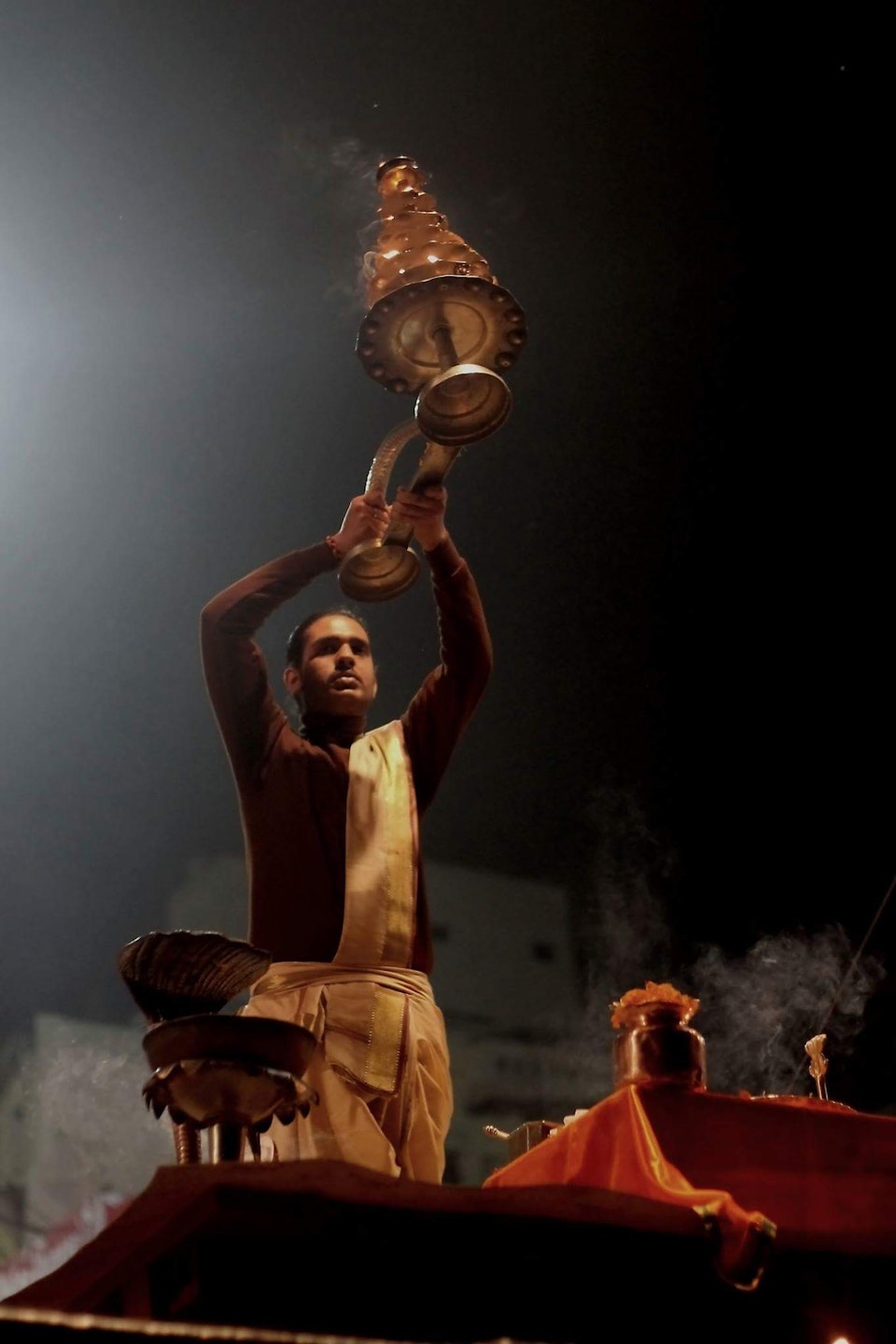
Aarti also occurs every evening, performed by The Brahmin giving thanks to the life source of The Gange. Courtesy of Melissa Hamlyn.
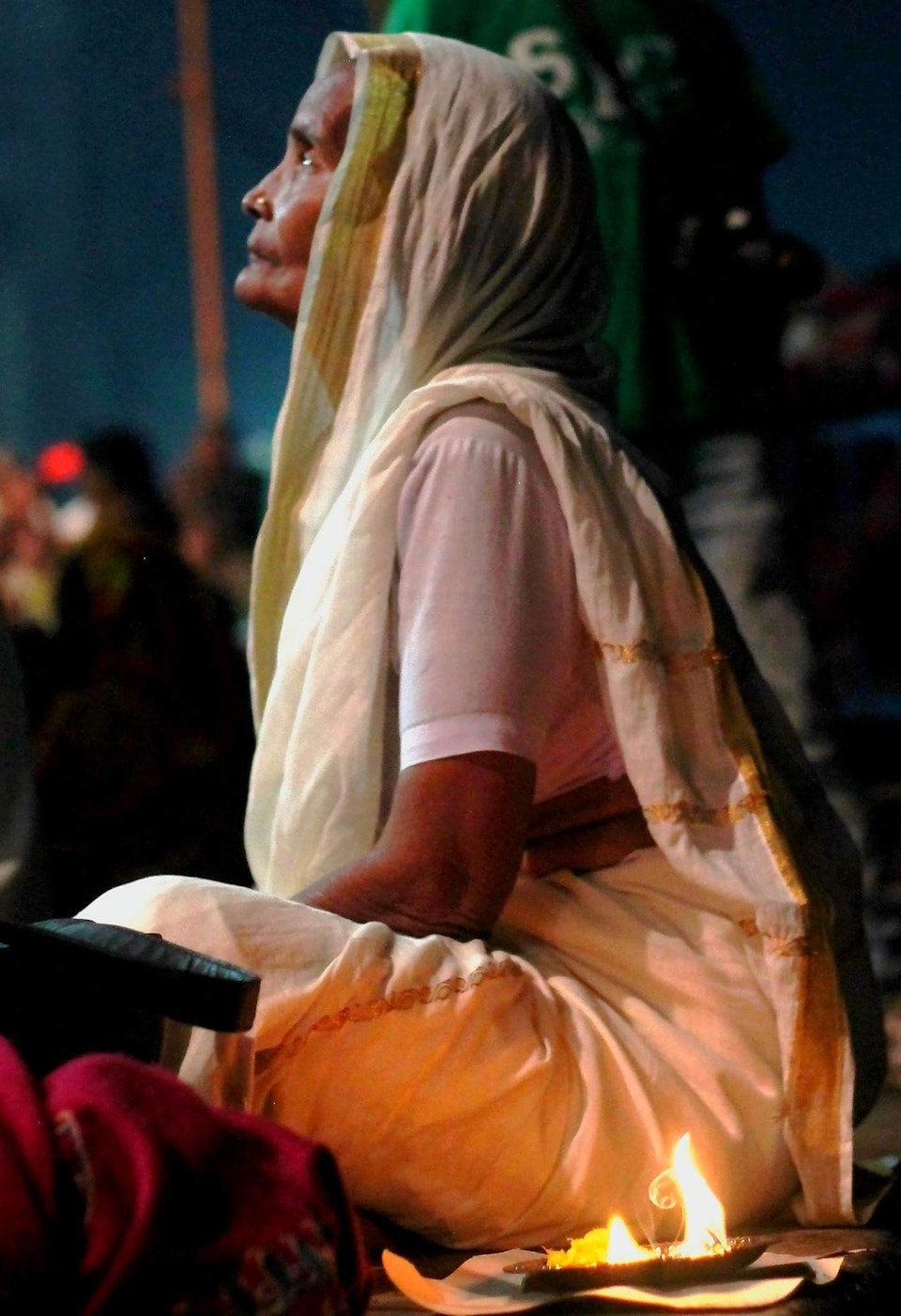
A nightly pilgrimage to the lively banks of The Gange. Courtesy of Melissa Hamlyn.
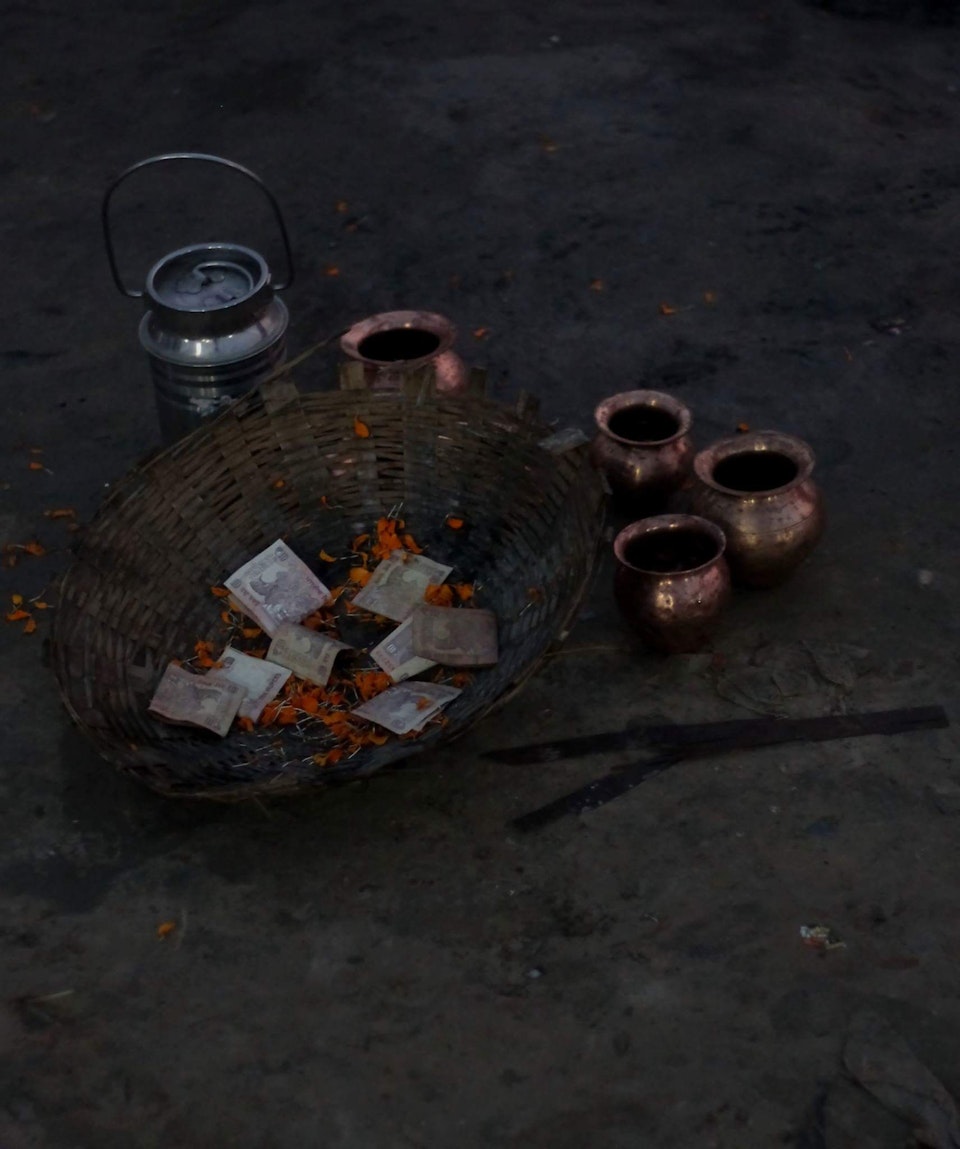
Offerings. Courtesy of Melissa Hamlyn.
Written by Melissa Hamlyn
Read Part Two here
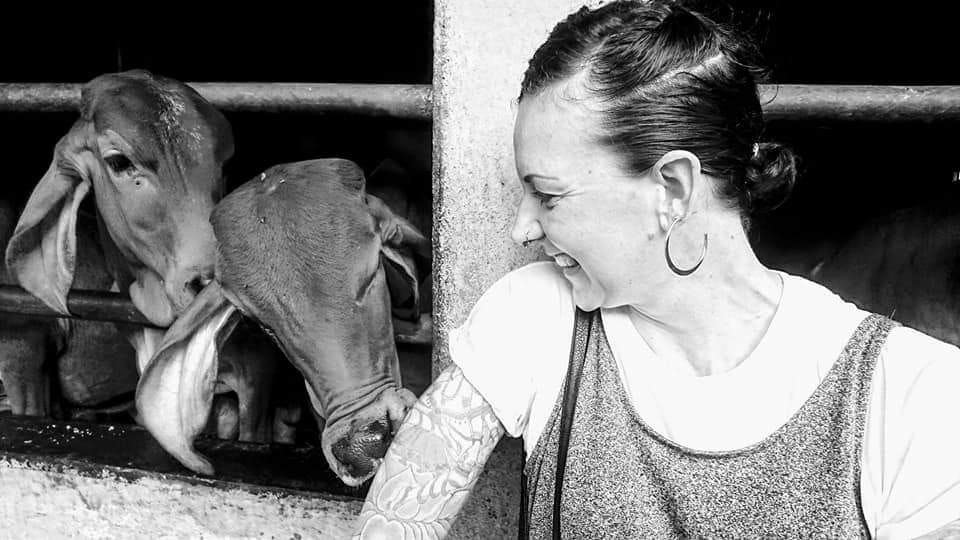
Embracing the art of slow travel. Courtesy of Melissa Hamlyn.
Melissa Hamlyn recently graduated from UNSW, Sydney, Australia with a Bachelor of Fine Arts (Honours) she combines her art curious nature with practical experience in the arts and has participated in writing programs, organised zine fairs, exhibits in galleries and creates content for digital media.
Events include DARK MOFO, MONA FOMA and Beyond The Valley. Writing mentorships and collaborations include RMIT's Catalyst magazine, UNSW's Framework, Interlude Gallery writers program, n'SCRIBE's short story anthology and zine fairs in Australia and The Netherlands.
For more stories and new artist updates, subscribe here.